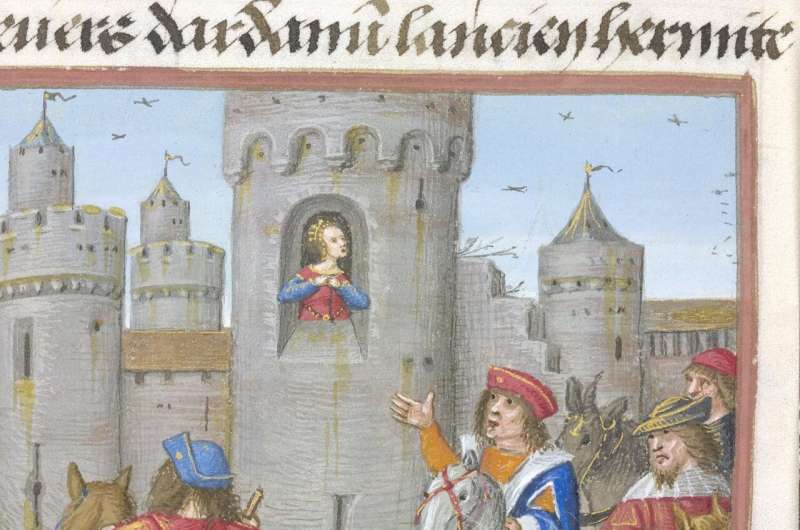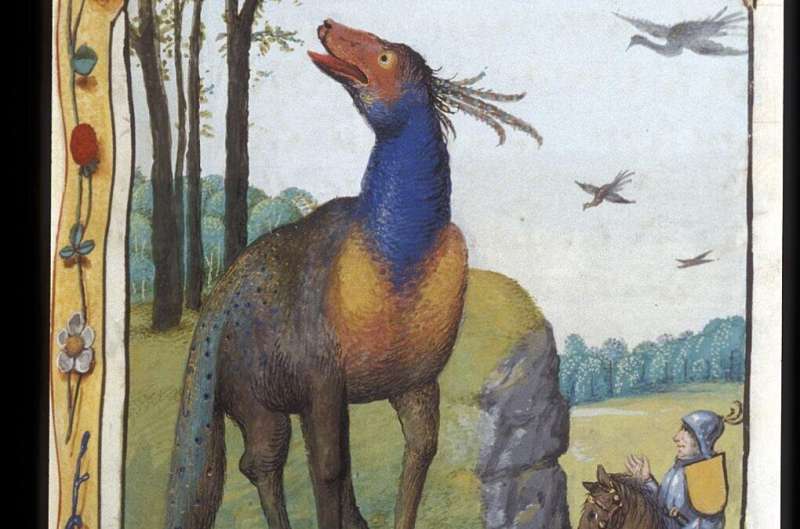This article has been reviewed according to Science X's editorial process and policies. Editors have highlighted the following attributes while ensuring the content's credibility:
fact-checked
trusted source
proofread
Medieval French narrative reveals that the complexity of gender identity spans centuries

Gender and gender identity may seem like more recent headline-grabbing topics, but societies have discussed the subjects for centuries. A new approach to reading a medieval French narrative text suggests that gender identity 600 years ago was just as complex as it is today, according to a Penn State researcher.
"Gender diversity is not a new concept," said Brooke Findley, associate professor of French and women's, gender and sexuality studies at Penn State Altoona who authored the study. "The understanding that gender is different from biological sex, and that it doesn't always fit easily into a binary, has been with us throughout human history across diverse cultures and time periods. And gender looks different than we would expect at different times in history. We have to approach medieval texts keeping in mind that our current assumptions about gender won't necessarily hold true in that context."
In the current study, published in Medieval Feminist Forum: A Journal of Gender and Sexuality, Findley examined Heart of Steel, a character in the 15th century French romance "Perceforest." The work's use of both masculine and feminine pronouns to refer to the character, and the difficulties that Heart of Steel encounters when trying to explain their gender to others, suggest that the character may be best understood as not easily fitting into a male-female gender binary. The character's struggle to define their gender and have it be accepted by others resembles challenges faced by the LGBTQ+ community today, according to Findley.
"Especially right now, when we're seeing a lot of anti-trans legislation in the U.S., I think there's sometimes the assumption that being trans is something new, or that it's a fad," Findley said. "In fact, trans and nonbinary people have existed throughout history. The stories are everywhere once you start looking for them."
Medieval scholars use the term "romance" to describe a secular narrative written in the common language and meant for popular consumption, Findley explained. Although composed in French, likely in the area of modern-day Burgundy, the six-book-long romance "Perceforest" draws on Celtic myth and takes place in pre-Arthurian Britain.

In the section of the romance that Findley examined, Heart of Steel is first introduced as a courtly maiden named Neronés who falls in love with the Golden Knight. But the lovers are separated when Neronés is abducted by her jealous fiancé and physically assaulted by his sister. After feigning death to escape torture, Neronés undergoes a symbolic rebirth, dyes their skin a darker color—which, at the time, was considered a masculine trait—and adopts the persona of Heart of Steel.
The character eventually becomes the squire of the Golden Knight, who does not recognize them. Heart of Steel, seemingly reluctant to return to their identity as Neronés, struggles to explain who they are to their former lover. The couple eventually meets the Fairy Queen, who forces Heart of Steel to resume living as a woman.
Findley, who previously wrote about Heart of Steel as a cross-dressing woman, re-examined the text for the current study without assuming that the character is a woman.
"This is a good example of needing to get away from assumptions about gender," Findley said. "I assumed this character was a woman, but now, looking more closely at what the text is actually telling us, I think I was wrong to do so."
The researcher noted that after the character becomes Heart of Steel, the romance uses both "he" and "she" pronouns to refer to the character, at times using both in the same sentence.
"French is a very gendered language," Findley said. "You can see gender markers everywhere, not only in pronouns but in adjectives and certain verb forms. When you look closely at this particular text, you find very deliberate, systematic pronoun mixing used for Heart of Steel. This is something that 'Perceforest' doesn't do for any of its other characters, and it's also something that seems to be unusual in other texts from the time. When Heart of Steel is with their love interest the Golden Knight, there's actually more pronoun mixing than in other scenes. It begs the question: are we playing with the possibility of a queer love interest?"
Just as complex as the pronoun mixing are the character's attempts to explain their own identity, noted Findley. The character first tries describing their identity to the Golden Knight in a series of dream narratives in which Heart of Steel appears as both a man and a woman. Later, when asked by the Fairy Queen whether they are a man or a woman, Heart of Steel refuses to answer but instead asks the queen to "listen to [their] story" and recounts their history in a long, narrative poem set to music.
"What Heart of Steel seems to be expressing is the idea that gender is a story, not a simple one but one that's metaphorical and complex, and that maybe nobody will understand," Findley said. "The queen, on the other hand, is an enforcer of gender norms and forces a gender identity onto Heart of Steel by making them dress as a woman."
Shortly after forcing Heart of Steel to dress as a woman, the queen sends the Golden Knight off on more adventures without Heart of Steel, said Findley.
"The romance leaves us wondering how the lovers feel about the queen defining Heart of Steel's gender," Findley said. "Even though the gender 'order' is restored by the queen at the end of the story, the implication is that this isn't what either Heart of Steel or the Golden Knight would have wanted. It's not a happy ending.
"The story shows us that people trying to control or limit gender diversity, or being frightened by different expressions of gender identity, isn't unique to the current moment. By studying historical sources without assumptions we are able to see what people in the past thought about gender diversity, and that gender has always been stranger and more complicated than we've been led to believe."
More information: Brooke Heidenreich Findley, "Oiez mon aventure": Cuer d'Acier's Nonbinary Gender in Perceforest, Medieval Feminist Forum: A Journal of Gender and Sexuality (2023). scholarworks.wmich.edu/mff/vol58/iss2/4/
Provided by Pennsylvania State University




















